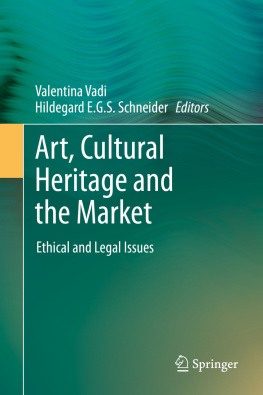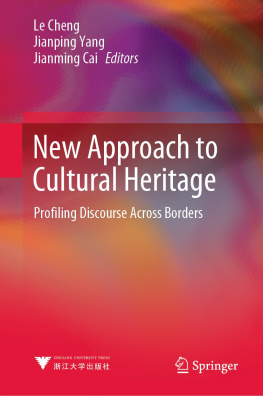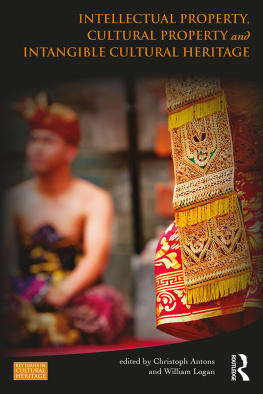Valentina Vadi and Hildegard E. G. S. Schneider (eds.) Art, Cultural Heritage and the Market 2014 Ethical and Legal Issues 10.1007/978-3-642-45094-5_1
Springer-Verlag Berlin Heidelberg 2014
1. Art, Cultural Heritage and the Market: Legal and Ethical Issues
Abstract
Once the domain of elitist practitioners and scholars, international cultural law has emerged as the new frontier of international law. The rise of international cultural law as a distinct field of study reflects the Zeitgeist characterised by increased globalisation and the vitality of international law in governing global phenomena. International cultural law has made headlines and attracted the varied interests of academics and policy-makers, museum curators and collectors, human rights activists and investment lawyers, and artists and economists just to mention a few. International cultural law includes extremely diverse components and constitutes a good example of multilevel governance and legal pluralism. The return of cultural artefacts to their legitimate owners, the recovery of underwater cultural heritage, and the protection and promotion of artistic expressions are just some of the issues regulated by such a field of study.
The book focusses on the particular area of the restitution of cultural property and dispute settlement mechanisms used in international disputes relating to cultural objects within the larger field of international cultural law. This is an area in which public law aspects (e.g., state succession, international conventions etc.) intermingle with procedural and private law aspects (private property rights, statute of limitations, forum non conveniens to mention but a few). This book addresses the question of who owns culture? by examining recent cases and conflicting interests. The approach is mainly legal, but interdisciplinary approaches have been adopted as well.
V. Vadi authored the Sects..
1.1 Introduction
Once the domain of elitist practitioners and scholars, international cultural law has emerged as the new frontier of international law. The rise of international cultural law as a distinct field of study reflects the Zeitgeist characterised by increased globalisation
The book focusses on the particular area of the return/restitution of cultural property and related disputes within the larger field of international cultural law. This is an area where public law aspects (e.g. state succession, international treaties, humanitarian law, the law of war, state immunity etc.) intermingle with procedural and private law elements (private property rights, statute of limitations, forum non conveniens to mention but a few). This book addresses the question of who owns culture? by examining recent cases and the relevant legal framework. The approach is mainly legal, but interdisciplinary approaches have been adopted as well.
Contemporary intersections between art, cultural heritage and the market are complicated by a variety of ethical and legal issues, which often describe complex global relations. What happens if a work of art, currently exhibited in a museum, turns out to have been looted during WWII? What is the relevant legal framework? Should works of art be treated differently from other looted goods? Analogously, what happens to cultural artefacts taken away from their countries of origin during the colonial period? What should be done with ancient shipwrecks filled with objects from former colonies? Should such objects be kept by the finders? Should they be returned to the country of origin? This book addresses these different questions while highlighting the complex interplay between legal and ethical issues in the context of looted cultural goods and underwater cultural heritage. Although looted art and underwater cultural artefacts clearly present differences, they do still share important common features in that they condense the human experience and the vicissitudes of those who owned them, in addition to having their own intrinsic value.
After briefly defining the notions of art and cultural heritage, this chapter enucleates their interplay with the market, and sketches out the structure of the book, and its main arguments and underpinnings. It then concludes by highlighting some key arguments and themes of the book.
1.2 The Essence of a Work of Art
Hamlet: Do you see nothing here?
The Queen: Nothing at all; yet all that is, I see.
What is art? When Brancusi, a modern sculptor, began working on the group of sculptures that are known as Bird in Space , he d[id] not want to represent a bird, but its very essence, its flight, its lan .
In other cases, judges have been required to deal with art and to ascertain the quality of a collection of objects, for instance to decide whether a charitable trust for setting up a museum was properly established.
However, artistic expressions vary and, despite several attempts, no single definition exists. Art has different meanings to different people and its appreciation varies depending on time and space. Ultimately, ascertaining the essence of art is a matter of perspective and comes down to the question of how one should, and should not, look at paintings. As a philosopher pointed out:
telling artworks from other things is not so simple a matter and these days one might not be aware he was on artistic terrain without an artistic theory to tell him so. And part of the reason for this lies in the fact that terrain is constituted artistic in virtue of artistic theories, so that one use of theories, in addition to helping us discriminate art from the rest, consists in making art possible.
Three examples may clarify the difficulty in discerning art. For instance, the 1863 Paris Salon de Refuss , an art exhibition of paintings which were excluded from the more formal setting of the Salon de Paris , included iconic Impressionist works, including Manets Le djeuner sur l hrbe . In sum, art presents degrees of incommensurability which defies legal labels and taxonomies.
While it is difficult to define art, They waver between applying strict legal standards and/or recognising upfront the complex ethical issues involved.
1.3 The Shift from Cultural Property to Cultural Heritage
This is not money. This is historical heritage.
A number of international law instruments provide slightly different definitions of cultural property. For instance, the 1954 Hague Convention on the Protection of Cultural Property in the Event of Armed Conflict defines cultural property as:
movable or immovable property of great importance to the cultural heritage of every people, such as monuments of architecture, art or history, whether religious or secular; archaeological sites; works of art; manuscripts, books and other objects of artistic, historical or archaeological interest
In parallel, the 1970 Convention on the Means of Prohibiting and Preventing the Illicit Import, Export and Transfer of Ownership of Cultural Property (1970 UNESCO Convention)
However, recent shifts in international law highlight that the cultural property protection paradigm has increasingly been perceived as inadequate and that other approaches are gaining pre-eminence.
Second, the property model also presents a formalistic and rigid structure which may be inadequate to address incommensurable and inalienable aspects of culture.
Third, questions have arisen as to whether intangible forms of cultural heritage are adequately protected by intellectual property. The notion of cultural property is rooted in the Western intellectual tradition






